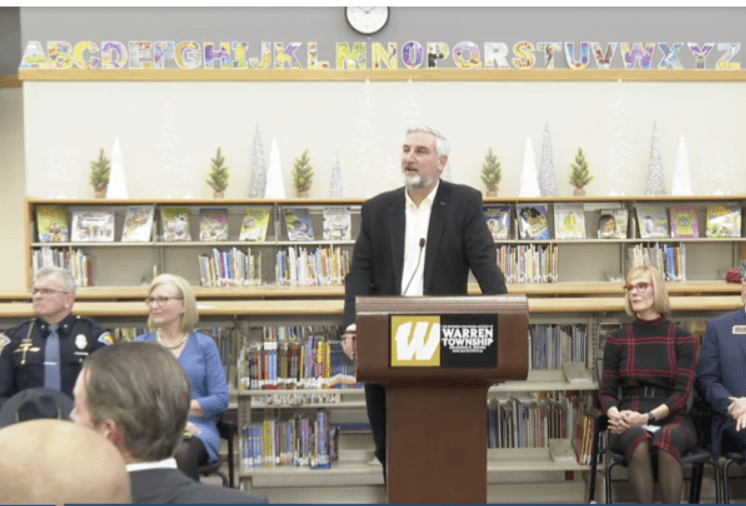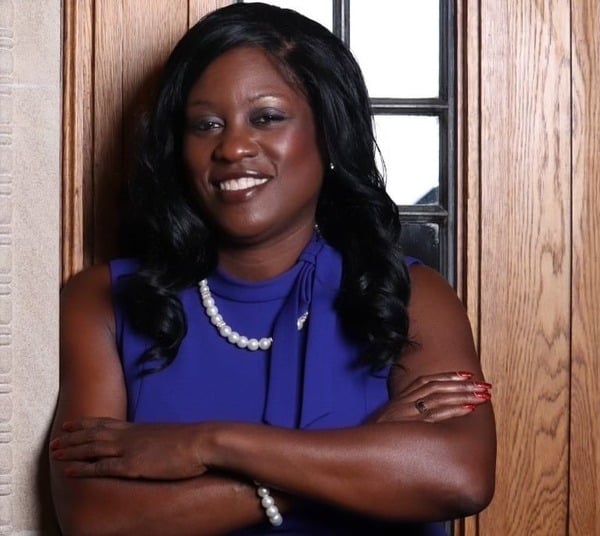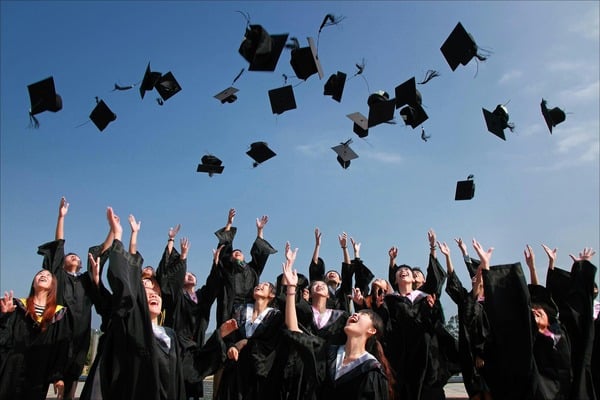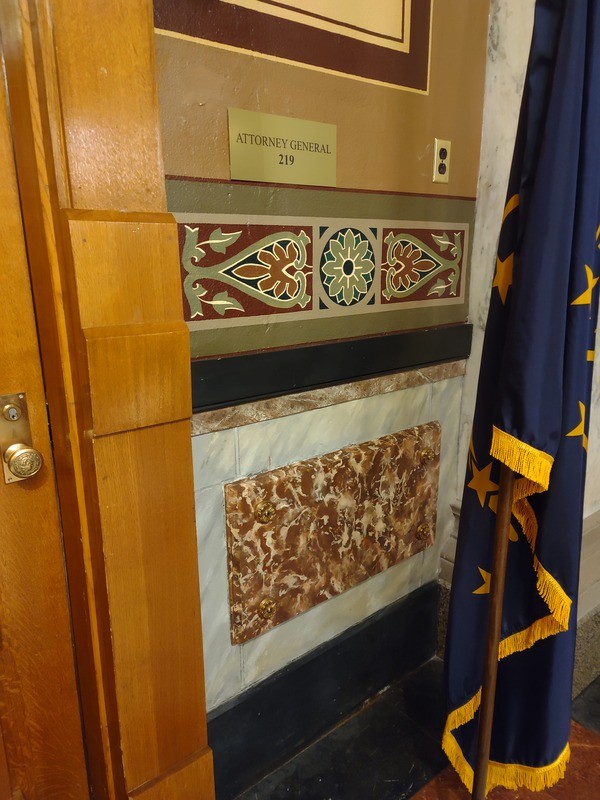Gov. Eric Holcomb (above, center) unveiled his Next Level Agenda for 2023 on Tuesday at Liberty Park Elementary School in Indianapolis, which served as what he called a “perfect backdrop” to discuss issues like literacy, education and more.
With the upcoming 2023 legislative session being a budget year, Holcomb announced his spending goals for four categories: health and wellbeing, education and workforce, community development, and economic development. These would work in conjunction to create the state’s “10th straight honestly balanced budget,” according to Holcomb.
While Holcomb’s official proposed budget will not be released until 10 a.m. Thursday, he gave key points within each category that he plans on addressing this upcoming session.
Health and wellbeing
The state needs to become healthier as a whole, said Holcomb, arguing that this can only be accomplished by investing in new ideas. His agenda includes a budget request for $120 million for state fiscal year 2024 and $227 million for 2025.
Some uses for this request would include:
Increased access to mental health programs, with the wellbeing of veterans closely monitored.
Implementing a treatment finder program for those struggling with drug addiction
A 92-county rollout of the My Healthy Baby program.
Expanding 9-9-8, the state’s crisis hotline.
Education and workforce
Holcomb broke this category up into sections for early childhood, K-12, post-secondary/higher education and adult learner programs, with the overall goal of increasing literacy and education in the state.
Early childhood plans included:
Using federal funds to establish a $25 million innovation grant to support employer-sponsored health-care options.
Reducing regulatory burdens for existing and new childcare providers to attract new members of the workforce.
Expanding access to the Child Care and Development Fund as well as the On My Way Pre-K program.
K-12 plans included:
Increasing K-12 tuition support by $1.157 billion.
Eliminating textbook fees for Hoosiers. Indiana is one of just seven states that allow schools to charge families for textbook and curriculum materials.
Increasing high-quality STEM education in Indiana classrooms.
Launching the Dolly Parton Imagination Library statewide, providing books to children within their homes.
Post-secondary and higher education plans included:
Increasing higher education funding by $184 billion.
Supporting the Commission for Higher Education to keep graduating students in Indiana.
Automatically enrolling all eligible students in the 21st Century Scholars Program.
Supporting Indiana’s only predominantly Black institution, Martin University, with an infusion of about $10 million.
Adult learner plans included:
Expanding excel centers across the state and increasing funding for the online Graduation Alliance.
Increasing funding for general adult education programs.
Increasing funding for the Workforce Ready Grant.
Increasing the INVETS program to recruit more veterans to move to Indiana.
Community development
Holcomb said he considered this pillar of his agenda to target Hoosier “quality of life” and the ways it attracts specific investments and enables thriving communities.
Under this category, he specified working on:
Requesting an additional $500 million for the Regional Economic Acceleration and Development Initiative.
Providing $25 million for land conservation.
Preparing for federal dollars for broadband internet.
Doubling food bank funding.
Investing in EMS training and personal protective equipment for volunteer firefighters.
Increasing the Indiana State Police starting salary to $70,000.
Economic development
To bring more people and opportunities to the state, Holcomb shared his ideas for Indiana’s economic growth.
Some ideas included:
Establishing an ongoing revolving fund of $150 million for site acquisition.
Expanding the Manufacturing Readiness Grant Program to $40 million.
Increasing Indiana Destination Development Corporation funding by $20 million to bring in visitors.
Reactions and what’s next
Reactions to Holcomb’s agenda were mostly favorable on the Republican side, with Senate President Pro Tem Rodric Bray, R-Martinsville, saying, “We share the governor’s goals of improving our public and mental health infrastructure and providing new funding to that end, as well as paying down the pre-1996 Teachers’ Retirement Fund, supporting law enforcement and continuing to fully fund the state’s K-12 public education.”
House Speaker Todd Huston, R-Fishers, also shared his support: “We look forward to working alongside Governor Holcomb this session to ensure Indiana’s positive momentum continues to grow, which impacts everything from our strong economy to educational and workforce opportunities.”
House Democratic leader Phil GiaQuinta, D-Fort Wayne, took a somewhat positive stance while remaining cautious, saying in a statement, “From eliminating textbook fees to making historic investments in public health, Democrats and Gov. Holcomb are on the same page and I’m glad to see support for the ideas we’ve championed for years. But I’m afraid the real question is whether Statehouse Republicans are as forward-thinking as Statehouse Democrats and the governor.”










